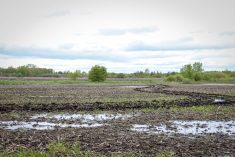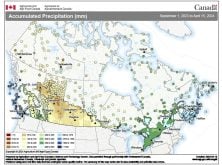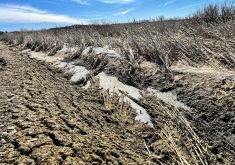Each cubic foot of drifted, piled or compacted snow contains two to three gallons of water, so actions homeowners take now can minimize future water problems in or around their house, says Ken Hellevang, North Dakota State University Extension Service agricultural engineer and flood expert.
For example, about 2,500 gallons of water will come from a 1,000-square-foot roof with snow one foot deep across the roof. This much water may cause seepage problems if allowed to drain next to the house. Hellevang recommends homeowners make sure their eavestrough or gutter downspouts carry the water several feet from the house to a well-drained area.
Read Also

Mazergroup’s Bob Mazer dies
Mazergroup’s Bob Mazer, who helped grow his family’s company into a string of farm equipment dealerships and the main dealer for New Holland machinery in Saskatchewan and Manitoba, died July 6 from cancer.
He also has this advice to help prevent snowmelt from damaging homes:
Move snow on the ground away from the house. Snowmelt may cause a wet basement if it’s allowed to run down along the basement wall. If the ground is sloped one inch per foot near the house, moving the snow just three to five feet from the house will reduce problems.
Examine and clean both the sump pump and pit. Test your sump pump by pouring water into the pit. Make sure the discharge hose carries the water several feet away from the house to an area that drains well.
Make sure the sump pump discharge hose is on sloped ground so it drains to prevent it from freezing.
Remove snow from around rural yards to minimize soft, wet soil conditions.
“Remember, a 10-foot-high pile of snow 20 feet in diameter contains 2,000 to 3,000 gallons of water,” Hellevang says.


















